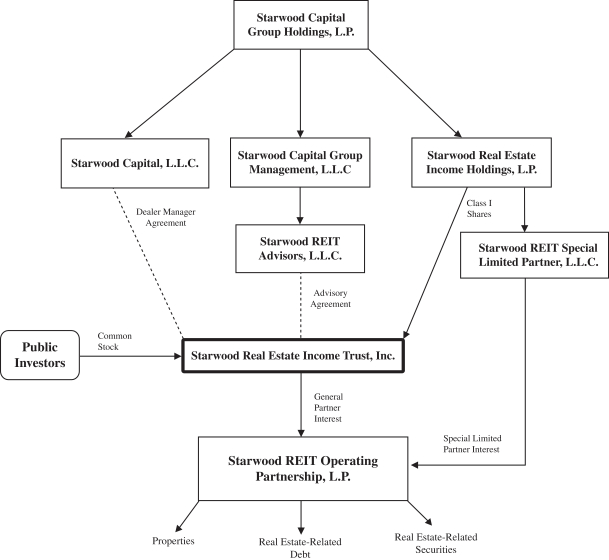APPENDIX B: DISTRIBUTION REINVESTMENT PLAN
This Distribution Reinvestment Plan (the “Plan”) is adopted by Starwood Real Estate Income Trust, Inc. (the “Company”) pursuant to its Articles of Amendment and Restatement (as amended, restated or otherwise modified from time to time, the “Charter”). Unless otherwise defined herein, capitalized terms shall have the same meaning as set forth in the Charter.
1.Distribution Reinvestment. As agent for the stockholders (the “Stockholders”) of the Company who (i) purchase Class T shares, Class S shares, Class D shares or Class I shares of the Company’s common stock (collectively the “Shares”) pursuant to the Company’s continuous public offering (the “Offering”), or (ii) purchase Shares pursuant to any future offering of the Company (a “Future Offering”), and who do not opt out of participating in the Plan (or, in the case of Alabama, Arkansas, Idaho, Kansas, Kentucky, Maine, Maryland, Massachusetts, Nebraska, New Jersey, Ohio, Oregon and Washington investors and clients of participating broker-dealers that do not permit automatic enrollment in the Plan, who opt to participate in the Plan) (the “Participants”), the Company will apply all dividends and other distributions declared and paid in respect of the Shares held by each Participant and attributable to the class of Shares purchased by such Participant (the “Distributions”), including Distributions paid with respect to any full or fractional Shares acquired under the Plan, to the purchase of additional Shares of the same class for such Participant.
2.Effective Date. The effective date of this Plan shall be the date that the minimum offering requirements are met in connection with the Offering and the escrowed subscription proceeds are released to the Company.
3.Procedure for Participation. Any Stockholder (unless such Stockholder is a resident of Alabama, Arkansas, Idaho, Kansas, Kentucky, Maine, Maryland, Massachusetts, Nebraska, New Jersey, North Carolina, Ohio, Oregon or Washington or is a client of a participating broker-dealer that does not permit automatic enrollment in the Plan) who has received a Prospectus, as contained in the Company’s registration statement filed with the Securities and Exchange Commission (the “SEC”), will automatically become a Participant unless they elect not to become a Participant by noting such election on their subscription agreement. Any Stockholder who is a resident of Alabama, Arkansas, Idaho, Kansas, Kentucky, Maine, Maryland, Massachusetts, Nebraska, New Jersey, North Carolina, Ohio, Oregon or Washington or is a client of a participating broker-dealer that does not permit automatic enrollment in the Plan who has received a Prospectus, as contained in the Company’s registration statement filed with the SEC, will become a Participant if they elect to become a Participant by noting such election on their subscription agreement. If any Stockholder initially elects not to be a Participant, they may later become a Participant by subsequently completing and executing an enrollment form or any appropriate authorization form as may be available from the Company, the Company’s transfer agent, the dealer manager for the Offering or any soliciting dealer participating in the distribution of Shares for the Offering. Participation in the Plan will begin with the next Distribution payable after acceptance of a Participant’s subscription, enrollment or authorization. Shares will be purchased under the Plan on the date that Distributions are paid by the Company.
4.Suitability. Each Participant is requested to promptly notify the Company in writing if the Participant experiences a material change in his or her financial condition, including the failure to meet the income, net worth and investment concentration standards imposed by such Participant’s state of residence and set forth in the Company’s most recent prospectus. For the avoidance of doubt, this request in no way shifts to the Participant the responsibility of the Company’s sponsor, or any other person selling shares on behalf of the Company to the Participant to make every reasonable effort to determine that the purchase of Shares is a suitable and appropriate investment based on information provided by such Participant.
5. Purchase of Shares.
A. Participants will acquire Shares from the Company (including Shares purchased by the Company for the Plan in a secondary market (if available) or on a stock exchange (if listed)) under the Plan (the “Plan Shares”) at a price equal to the NAV per Share applicable to the class of Shares purchased by the Participant on the date
B-1


